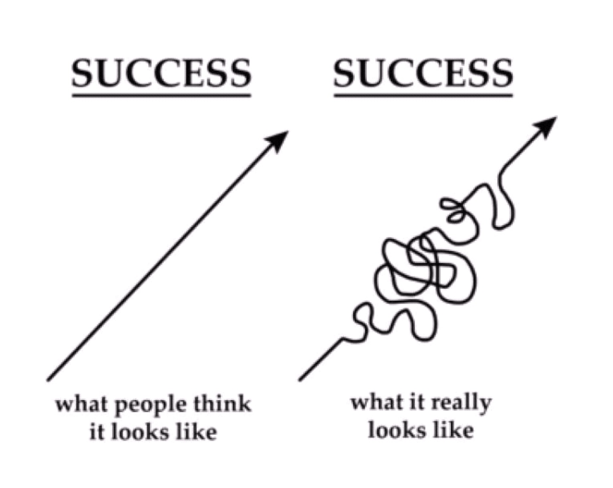
Nov 12, 2021 12:00:00 AM
As the horrors of World War II were drawing to a close, British Prime Minister Winston Churchill famously advised: “never let a good crisis go to waste.” Last school year, Hammarskjold Middle School, in East Brunswick, New Jersey, where I am the principal, faced such a crisis.
At the midpoint of the school year, 45 students were in danger of being retained due to academic disengagement. Most were non-white—a fact which particularly haunted us. In a typical year, only eight to 10 students would be at such high risk. We were all fully aware that retention is not only devastating for students when it happens, but also heightens their future risk of dropping out of school altogether.
Here’s how [pullquote]we shifted gears to avert disaster, despite the pandemic.[/pullquote] I believe that it can be replicated.
Our team, led by the curriculum supervisor, coach and building administrators, came up with a simple approach to academic recovery. We met with the families of the 45 students, and offered a clear strategy: participate in our 9-week program, supported weekly by a teacher who met with students in a live video format.
To pass for the year and avoid retention, students had to meet three straightforward requirements:
If students met these requirements, they would be promoted to the next grade.
Keeping students engaged was a challenge. A month in, less than half of the students were meeting the requirements. Yet the Academic Recovery team we fielded was determined to push through.
The biggest challenge was helping disaffected students. What happened between the halfway point and the end of the program was a tribute to the teachers’ determination to see their students through. We reached out to families and offered makeup sessions.
Slowly and steadily the number of students catching up climbed. Many reported feeling better about themselves, an important SEL component, and were surprised that we didn’t give up on them. [pullquote]In their short lives, adults had given up on them so many times already. We refused to do that.[/pullquote]
We also made a point of showing students their successes. A simple yet effective way to do this is by implementing a small wins chart.
By demonstrating the short progress markers students and adults so often overlook as we look to the end goal, students can literally see their progress. Tracking and celebrating small wins has been shown to work. Sharing these individualized progressions with students helps motivate them to move further and further along their road to success. When students see that their imperfect, yet remarkable progress can propel them, they believe in themselves. Kids succeed, sometimes in spite of themselves.

At the outset, I expected half the students to succeed. That alone would have been progress toward closing the pandemic inequity gap. To my surprise, in the end, 78% of participants (35) succeeded in passing by participating in the recovery program.
On an interesting side note, of the remaining 10 students who did not complete the recovery program requirements, seven passed for the year anyway through their own independent efforts with their teachers. In total, [pullquote]93% of the students at risk of failure succeeded in moving on to the next grade.[/pullquote] This was a success!
This program is not a catch-all. Yet it gave us a tool in our belt to offset equity gaps, something my team and I are passionate about. I consider perseverance a prerequisite in closing equity gaps. To refuse to give up on any child under any circumstance is what being an educator is about. We were invigorated by the outcome. It will continue to be a valued method in our toolkit to close equity gaps.
Dr. Michael Gaskell is Principal at Hammarskjold Middle School in East Brunswick, NJ. following experience as a special educator and assistant principal in Paramus, NJ. He continues to model the pursuit of lifelong learning as he serves to mentor new principals through the New Jersey Leaders to Leaders program. An NJPSA Stars recipient, he has been published in over 2 dozen articles in education journals and blogs, including Education Post, eSchoolNews, NASSP, Edtech and ASCD Smartbrief, he has made the most-read section of ASCD Smartbrief numerous times and has presented at national conferences, including the Learning and the Brain conference November, 2021. Mike had a book published in October, 2020 ( Microstrategy Magic), and a second book out this September 2021 ( Leading Schools Through Trauma). Dr. Gaskell works tirelessly to support instructional excellence and student success, for his school community, and most importantly, for the wellness and equity of all children.
Few issues in education spark more tension and debate than standardized testing. Are they a tool for equity or a burden on students? A necessary check on school systems or a flawed measure of...
Charter schools are public schools with a purpose. Operating independently from traditional school districts, they're tuition-free, open to all students, and publicly funded—but with more flexibility...
Despite the benefits of a diverse teaching force, prospective teachers of color fall out of our leaky preparation pipeline at every stage: preparation, hiring, induction, and retention. Here’s what...
Ed Post is the flagship website platform of brightbeam, a 501(c3) network of education activists and influencers demanding a better education and a brighter future for every child.
© 2020-2025 brightbeam. All rights reserved.
Leave a Comment